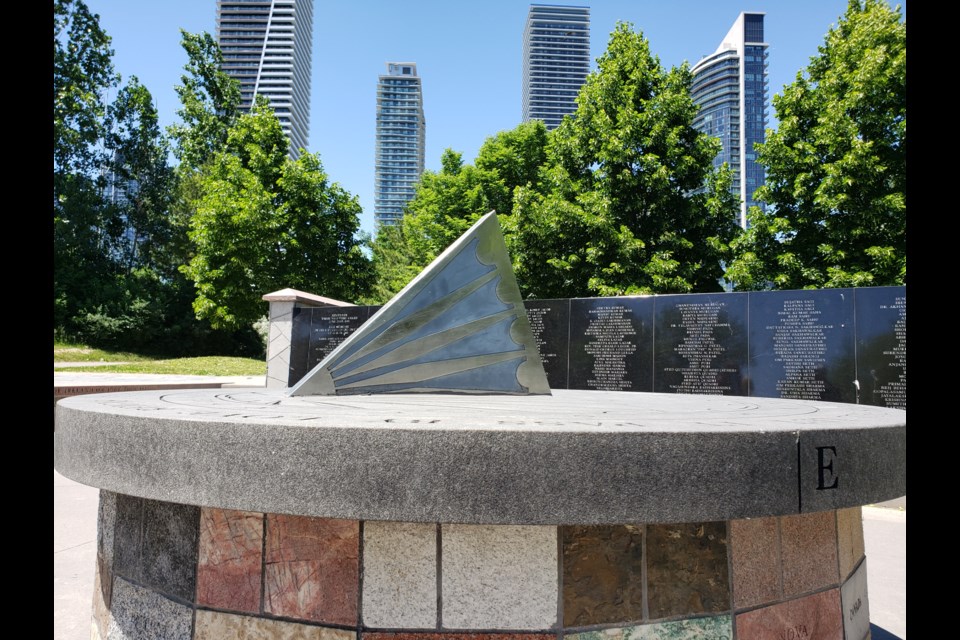Imagine a terrorist attack perpetrated on Canadian soil by Canadians that would take hundreds of lives. Imagine victims coming from almost every province in the federation. Imagine a shocking number of children dying in the attack. Image families ripped apart, left to mourn in isolation.
Here’s the problem: this is not the stuff of imagination. This attack happened on June 23, 1985.
The real accounting of that terrible day goes as follows: extremists put bombs on two planes leaving Vancouver, one bound for India via Tokyo, the other heading to the same nation via Toronto, Montreal, and London. One bomb exploded as baggage handlers moved luggage from the connecting flight at Narita Airport in Japan, killing two and wounding four. Less than an hour later, Air India Flight 182 exploded off the coast of Ireland, killing all 329 on board. It is the worst mass murder and largest terrorist attack in our nation’s history.
As a former high school history teacher, I can tell you that, over the years, when I asked students about the worst terrorist attack in Canadian history, almost no one was able to answer the question. Relegated to a footnote, Air India has failed to inspire the outrage, empathy, and attention it deserves.
Maybe this is because of when it happened. Perhaps, in 1985, the incident could be too easily shelved and labelled as ‘foreign.’ Certainly, Canada’s reaction at the time would indicate that this was the case. Prime Minister Brian Mulroney called Indian Prime Minister Rajeev Gandhi to express his condolences, even though 280 of the 329 victims were Canadian. When family members arrived in Ireland to identify the remains of their loved ones, Irish authorities greeted them. There were no Canadian representatives there to comfort the families. It took the Canadian government six months to confirm the plane was bombed, something that was plainly obvious when Flight 182 went down.
While the man believed to have built the bombs was convicted of manslaughter (in 1991 for Narita and 2005 for Air India Flight 182), the ringleader escaped Canada, dying at the hands of Indian police in 1992.
Inexplicably, CSIS, who were closely monitoring the movements of the soon-to-be terrorists, erased 80 per cent of the wiretaps of the conspirators speaking on the telephone. They said it was part of their protocol and blamed the RCMP for not securing the tapes in a timely fashion. Meanwhile, it took fifteen years to charge the other alleged conspirators (which ended in an acquittal) and over twenty years for the government to agree to a full public inquiry—this after years of pleading by the families of the victims.
How do you explain this series of missteps other than to admit that the victims were not valued as full-fledged Canadians? Instead, one can conclude that they were judged—even if only subconsciously—by the colour of their skin and their South Asian ancestry.
Appearing before a parliamentary committee looking to beef up Canada’s anti-terrorism laws in 2012, Dr. Bal Gupta, then spokesperson for the Air India Victims’ Families Association, spoke of the victims.
“They came from almost all religious backgrounds, including atheist, Buddhist, Christian, Hindu, Jain, Muslim, Sikh, and Zoroastrian," he said. "Eighty-six victims were children under the age of 12. Twenty-nine families—husband, wife, and all children—were wiped out. Thirty-two persons were left alone; the spouse and all the children were gone. Seven parents in their forties and fifties lost all their children, and two children, about the age of 10, lost both parents.”
Why is this terrible event still not front of mind for Canadians?
I can only imagine Dr. Gupta’s grief. I can only imagine how betrayed he and the victims’ families have felt over the years. And I can only imagine how exhausted he is—having begged for justice from a nation that spent years in denial as the largest mass murder and worst terrorist attack in its history remained a tiny blip on the national radar.
On this National Day of Remembrance for Victims of Terrorism, let’s remember Air India. Let’s reconcile with our failures. Let’s make a commitment to giving this tragedy the place it deserves in our national consciousness. And let’s admit that it is our naiveté that could open the door to terror once again. As Dr. Gupta said when appearing before that parliamentary committee, “… make no mistake, the victims of the next terrorist act could be anybody. Terrorism cares little about the victim’s colour, creed, gender, or age.”
Sean Patrick Dolan is the author of My Father’s Secret, a fictional re-imagining of the worst terrorist attack in Canadian history, inspired by the Air India tragedy. He lives in Thornbury, ON.



